- Overview
-
| Classification |
Non-humanoid |
| Type |
Parasitic life-form |
|
|
| Affiliation |
Neutral |
| Home planet |
Unknown |
| First contact |
2364 |
-
Physiology
-
| Classification |
Bug-like |
|
|
| Body size |
Length 19.69 cm |
|
Width 9.62 cm |
| Body color |
Rose to lilac |
| Body
structure |
Symmetrical; visible subdisivion
into head - trunk - tail |
|
Head |
Thin disc-shaped segment with two
moveable, pincer-like extensions with three points on each side, connected to the trunk
without a neck. |
|
Trunk |
Subdivided into three segments;
external armor with gaps where the extremities are connected with the trunk |
|
Extremities |
Six short, scaled legs with three
claws on each feet, connected to the segments of the trunk in pairs |
|
Thin, moveable tail used as gill,
connected with the rear part of the trunk by a slim, tapering extension |
| Body
systems |
|
|
Nervous system |
Structure unknown; facilitates
consciousness and high intelligence |
|
To a large extent, the parasite is
telepathically controlled by the mother animal, without which the bug cannot survive |
Circulatory
system |
Structure unknown |
Respiratory
system |
Tail gill which juts out of the
nape of the host after the infection |
|
Sense organs |
Telepathic centre as the main
sense organ for the communicaton with other bugs and the mother animal |
|
Sophisticated sense of touch in
the feet, which are used by the parasite to cling to the spinal column and stimulate the
adrenaline gland of the host |
Nutrition and
digestion |
Unknown; after the infection, the
hosts prefer the larva of the tenebrio molitor (meal worms) |
|
Reproduction |
Parasites can only be reproduced
by the mother animal; the reproduction of mother animal itself is unknown |
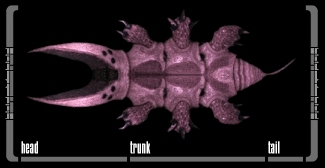 |
-
|
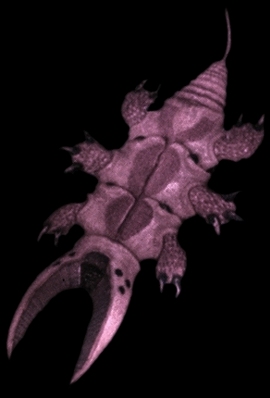 |
-
- Description
-
| Although in the year 2364, the
non-humanoid life-form known as alien parasites infiltrated large parts of the Federation
and probably infected dozens, if not hundreds of Starfleet officers, our knowledge
concerning their physiology is very limited, and nearly nothing is known about the goals,
motives or social structure of this species. Unfortunately, the said invasion remained the
sole contact. The parasites are indigenous to an unexplored planet in the Galaxy and
belong to the sentient life-forms with higher intelligence and consciousness.
Nevertheless, an apparently primitive, parasitic life cycle is still the predominant
feature of the asexual beings, probably due to their small body size and the bug-like body
structure, which does not allow an active influence on the environment or the development
of industrial structures, let alone interstellar travels. They are dependent on the
control of the mother animal as well as the union with a humanoid host organism, which
serve as their interface to the invornment and make the helpless bugs to powerful
invaders, according to the principle "We are the brains, you are the muscles".
Probably, the alien parasites haven't left their home planet before they were visited by a
compatible species. However, as soon as a mother animal has nested in a host and started
the reproduction of parasites, the invasion and infection of an entire species is nearly
unstoppable. |
| |
The mother animal
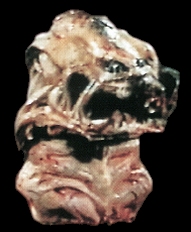 |
Although
the parasites have to infect a host organism in order to become capable of action, the
physiologically completely different mother animal controls and coordinates the parasitic
life cycle of every bug by stimulating its telepathic sensory centre. Therefore, based on
the specific biology, the mother animal is at the head of the alien society. Similar to
the queen of a bee hive, it is at once the only member of the species that is able to
reproduce parasites. Consequently, it is responsible for the preservation of the species.
The bugs are dependent on the mother animal to a high degree. They cannot survive without
its telepathic control and die in case of its death. Supposedly, there are more than one
mother animal, which control a collective of parasites each. It is unknown how the mother
animals themselves reproduce. However, since the mother animal is a parasite itself and it
nests within the thorax and the abdomen of the humanoid host despite it considerable body
size, it can be supposed that the victim is infected by a mother larva rather than a
fully-grown animal. Then, it grows within the host until it is able to give birth to the
smaller, bug-like parasites, which leave the body through the windpipe and the mouth,
subsequently infecting other potential hosts. |
| |
![Voice Recording [255 kQ]](../Source/Projects.gif) Play
voice recording Play
voice recording |
|
|
|
| |
The parasitic life cycle
| As soon
as the parasites, which probably are still larvas as well in the moment of the union and
therefore are considerably smaller than the normal bugs, have found a suitable host body,
they penetrate it and cling to the spinal column, the feets having contact to the nervous
system. After the infection, the tail gill juts out of the nape, facilitating the
respiration of oxygen even within the host organism. At this time, the parasite
controls all brain functions of the host, which becomes a marionette without individual
will or consciousness. In addition, with the aid of its feet, the parasite stimulates the
adrenaline gland, giving the host great power and an increased ability to resist against
exterior influences, boosting its aggressive potential. Also, the nutrition of the host
significantly changes; he prefers meal worms after the parasitic attack. In the end, the
host is the means of the parasites to realize their far-reaching goals and to interact
with their environment in various ways. The connection between both organisms is so tight
that each surgical removal would not only kill the parasite, but also the host. However,
the parasite is able to leave the host organism through the mouth by himself, for instance
if the latter one is deadly injured. Then, the bug may be able to search a new victim.
Only if the mother animal has been killed and consequently its influence on the parasites
vanishes, they inevitably die, no matter if they are within a host body or not. |
|
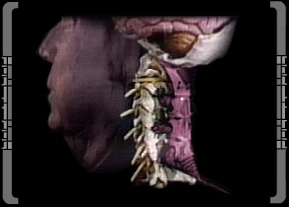 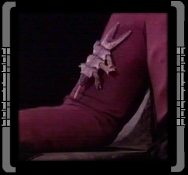
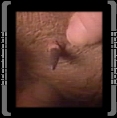
|
|
|








